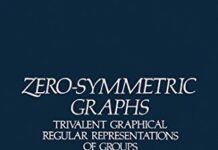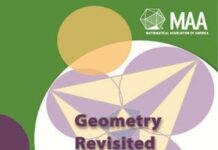
Ebook Info
- Published: 1973
- Number of pages: 368 pages
- Format: PDF
- File Size: 9.64 MB
- Authors: H. S. M. Coxeter
Description
Polytopes are geometrical figures bounded by portions of lines, planes, or hyperplanes. In plane (two dimensional) geometry, they are known as polygons and comprise such figures as triangles, squares, pentagons, etc. In solid (three dimensional) geometry they are known as polyhedra and include such figures as tetrahedra (a type of pyramid), cubes, icosahedra, and many more; the possibilities, in fact, are infinite! H. S. M. Coxeter’s book is the foremost book available on regular polyhedra, incorporating not only the ancient Greek work on the subject, but also the vast amount of information that has been accumulated on them since, especially in the last hundred years. The author, professor of Mathematics, University of Toronto, has contributed much valuable work himself on polytopes and is a well-known authority on them. Professor Coxeter begins with the fundamental concepts of plane and solid geometry and then moves on to multi-dimensionality. Among the many subjects covered are Euler’s formula, rotation groups, star-polyhedra, truncation, forms, vectors, coordinates, kaleidoscopes, Petrie polygons, sections and projections, and star-polytopes. Each chapter ends with a historical summary showing when and how the information contained therein was discovered. Numerous figures and examples and the author’s lucid explanations also help to make the text readily comprehensible. Although the study of polytopes does have some practical applications to mineralogy, architecture, linear programming, and other areas, most people enjoy contemplating these figures simply because their symmetrical shapes have an aesthetic appeal. But whatever the reasons, anyone with an elementary knowledge of geometry and trigonometry will find this one of the best source books available on this fascinating study.
User’s Reviews
Editorial Reviews: About the Author H. S. M. Coxeter: Through the Looking Glass Harold Scott MacDonald Coxeter (1907–2003) is one of the greatest geometers of the last century, or of any century, for that matter. Coxeter was associated with the University of Toronto for sixty years, the author of twelve books regarded as classics in their field, a student of Hermann Weyl in the 1930s, and a colleague of the intriguing Dutch artist and printmaker Maurits Escher in the 1950s. In the Author’s Own Words:”I’m a Platonist — a follower of Plato — who believes that one didn’t invent these sorts of things, that one discovers them. In a sense, all these mathematical facts are right there waiting to be discovered.” “In our times, geometers are still exploring those new Wonderlands, partly for the sake of their applications to cosmology and other branches of science, but much more for the sheer joy of passing through the looking glass into a land where the familiar lines, planes, triangles, circles, and spheres are seen to behave in strange but precisely determined ways.” “Geometry is perhaps the most elementary of the sciences that enable man, by purely intellectual processes, to make predictions (based on observation) about the physical world. The power of geometry, in the sense of accuracy and utility of these deductions, is impressive, and has been a powerful motivation for the study of logic in geometry.” “Let us revisit Euclid. Let us discover for ourselves a few of the newer results. Perhaps we may be able to recapture some of the wonder and awe that our first contact with geometry aroused.” — H. S. M. Coxeter
Reviews from Amazon users which were colected at the time this book was published on the website:
⭐This is a classic written by a master. It will take a while to get through it. It is often the problem that someone as smart as Coxeter, doesn’t realize how much smarter he is than the average person. Therefore, his writing is not exactly written for the novice. I would like to take issue with this description of the book “anyone with an elementary knowledge of geometry and trigonometry will find this one of the best source books available on this fascinating study.” That is far from true. On the second page, there is a double integral. This book is full of advanced math. Be prepared.
⭐This is not for the faint of heart. It is very advanced, requires a full knowledge of calculus, analytical geometry, advanced algebra, group theory, and much, much more.If you’re interested in Polyhedra and 3- dimensionsal symmetry, I would recommend “Mathematical Models”, by Cundy and Rollett. It gets into a lot if the math behind the models, sure, but it’s understandable to the average, interested, reader with a math background.The same cannot be said about ” Regular Polytopes”. I couldn’t recommend it to anyone other than a world-class, university level professor or researcher.
⭐Well it kept me busy for 5 years and I revelled in my uniqueness as I admired my reflected clone, being alone it made me savor my uniqueness and wonder which one of us was going to throw my dog his bone? it reflected the refracted Spirit of the Age….
⭐which I have used well over the years seems be a good book to go with this one.It may takes me years to get the worth of this book,but I have already the first yield.The combination of group theory with higher dimensionsin combinatorial topological terms has been a 20th century gold mineof new ideas and new groups.That some of the results have seeded the Engineeringmathematics of error correcting codes should be noted.That Cosmology has recently been using both Coxeter and Cartan tosee back toward the beginning of time shows that physics hasn’t been blind to geometry.
⭐Amazon recommended this book to me for $10 and I bought it mostly on name recognition of Coxeter. I’ve only read the first 3 chapters but have already learned a lot. I was aware there were only a few regular polyhedra but didn’t realize there were such simple combinatorial proofs.
⭐A more quantitative approach to the regular polytopes. I find working through trying to make them with paper, or other arts and crafts supplies, or with symmetry blocks displaying the different symmetries is extremely helpful in learning the subject. Also, the symmetry tables included are a beautiful thing. Excellent book.
⭐This is a beautiful classic that continues to be relevant today.
⭐Whilst a lot of the maths is beyond me I can follow enough to be entranced at the way everything unfolds from basic principles such as the Pythagorean right angle triangle theorem.I very much like the historical notes as well.Of course, this book is deservedly famous as one of the seminal works on higher dimensional polytopes.See my models at 3d Mandalas dot com
⭐I’ll start off with a warning: I brought this book because it was relevant to my masters dissertation in mathematics, and it’s a surprisingly heavy text for the price point. I definitely struggle with bits of it, though Coxeter is an engaging expositor.This is a solid (e-)book, and the historical notes are great, though there is some frustrating use of non-standard terminology in places. Further, and this is ultimately why this review is a 3 star one, the Kindle edition suffers greatly from not having any way to navigate by page, when there are frequent references to page numbers throughout the text. This makes the exposition rather harder to follow than it needs to be, and this isn’t an easy text to start with.There are also missing hyperlinks when sections are referred to, but this is more forgiveable.
⭐This book was clearly a labour of love by Coexeter. It is not a particularly easy read, but is a very good reference to regular shapes in higher dimensions.
⭐This book is a classic, by one of the best mathematicians of the 20th century. It’s a bargain.
⭐Lo que esperabaUn livre à mettre dans toutes les mains, mais au début il ne faut pas avoir peur de ne pas comprendre un paragraphe ou l’autre (je pense par exemple à l’introduction aux “configurations”, qui n’était pas claire pour moi qui n’en avais jamais entendu parler). Toutefois l’agencement est excellent et les notions introduites sans complexité superflue. En lisant à son aise, en retravaillant les formules, le texte est relativement simple à suivre, accessible et très intéressant.
⭐
Keywords
Free Download Regular Polytopes 3rd Edition in PDF format
Regular Polytopes 3rd Edition PDF Free Download
Download Regular Polytopes 3rd Edition 1973 PDF Free
Regular Polytopes 3rd Edition 1973 PDF Free Download
Download Regular Polytopes 3rd Edition PDF
Free Download Ebook Regular Polytopes 3rd Edition




